The gas distribution mechanism of the engine is driven by a rubber reinforced toothed belt. Replacing the timing belt is a routine maintenance task.
According to the manufacturer's recommendation, the timing belt must be replaced after 150 thousand kilometers or 10 years of operation. The timing belt is also replaced if, upon inspection, you find:
- traces of oil on any surface of the belt;
- signs of wear of the toothed surface, cracks, undercuts, folds and delamination of the fabric from the rubber;
- cracks, folds, depressions or bulges on the outer surface of the belt;
- fraying or delamination on the end surfaces of the belt.
WARNING: A belt with traces of engine oil on any surface must be changed without fail, as the oil quickly destroys the rubber. Cause of oil on the belt (usually this is a violation of the tightness of the seals of the crankshaft and camshafts) must be eliminated immediately.
NOTE: Work on a manhole, overpass or, if possible, on a lift.
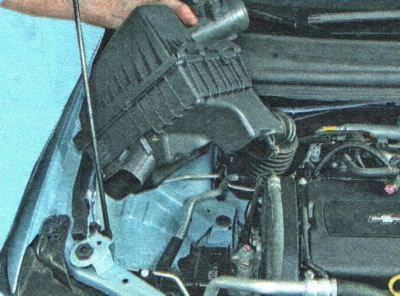
1. Remove the air filter housing (see «Removal and installation of the air filter and an air duct»).
2. Remove the right front wheel.
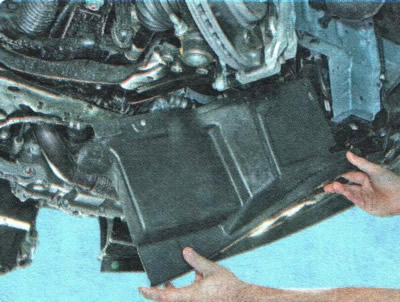
3. Remove fender liner and right engine mudguard (see «Removal and installation of mudguards and engine crankcase protection»).
4. Remove accessory drive belts (see «Replacing accessory drive belts»).
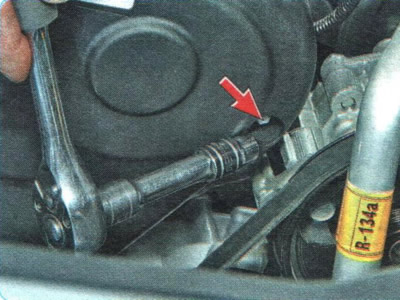
5. Turn out two bolts of fastening of the top cover of a drive of the gas-distributing mechanism...
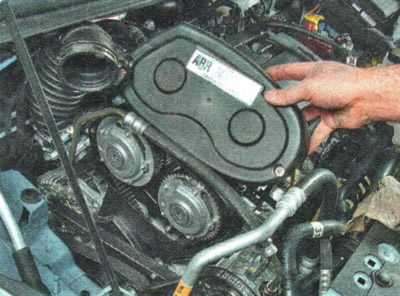
6.... and remove the cover.
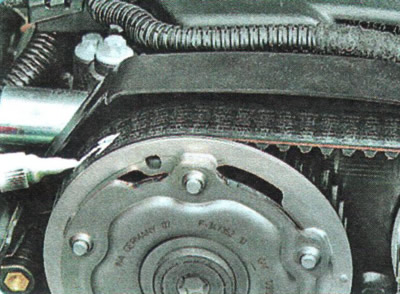
7. If you remove the belt not for replacement, mark with a felt-tip pen the direction of movement of the belt when the engine is running, so as not to change this direction when reinstalling.
NOTE: The teeth of the timing belt are run in to the toothed pulleys of the crankshaft and camshafts one-sidedly. Reversing the direction of the belt will cause it to wear faster due to repeated running-in.
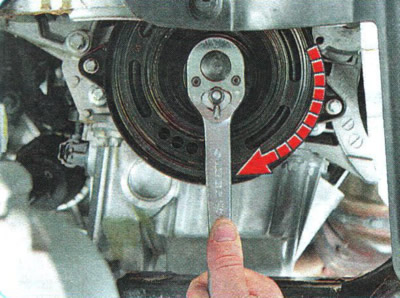
8. Turn out a bolt of fastening of a pulley of a cranked shaft...
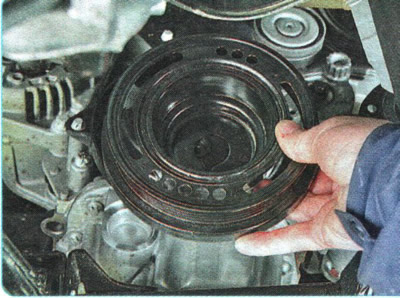
9.... and remove the pulley.
GOOD ADVICE: The crankshaft pulley bolt is tightened to a very high torque. In order to fix the crankshaft from turning, on a car with a manual transmission, engage V gear and depress the brake pedal (an assistant should do it).
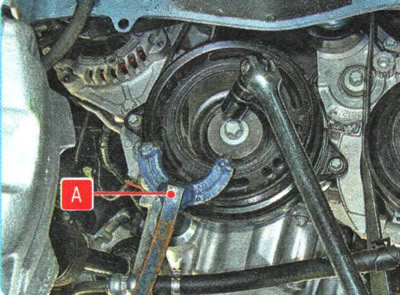
On a vehicle with an automatic transmission, use the special retainer A for the pulley.
10. Set the piston of the 1st cylinder to the TDC position of the compression stroke (see «Setting the piston of the first cylinder to the TDC position of the compression stroke»).
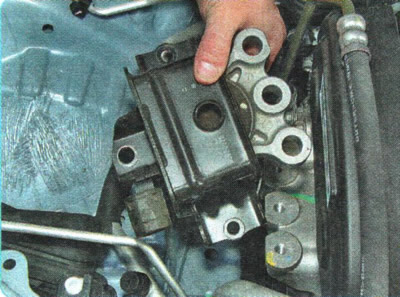
11. Remove the right suspension support of the power unit...
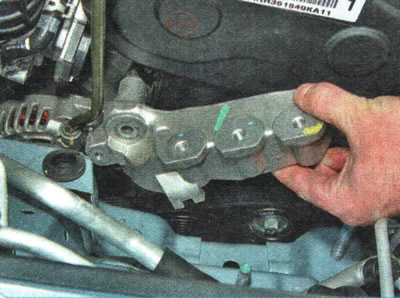
12.... and support bracket (see «Replacement of the right support of a suspension bracket of the power unit»).
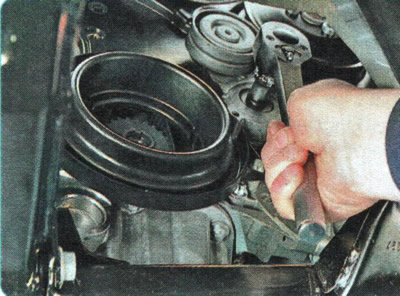
13. Turn out a bolt of fastening of a tension roller of a belt of a drive of auxiliary units...

14.... and remove the video.
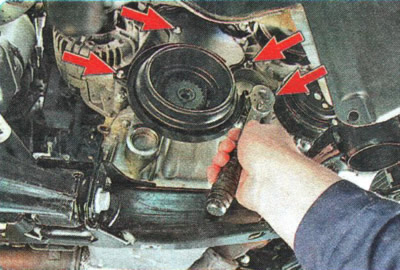
15. Turn out four bolts of fastening of the lower cover of a drive of the gas-distributing mechanism...
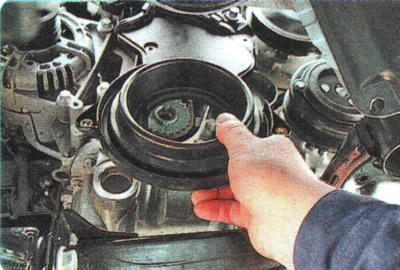
16.... and remove the cover.
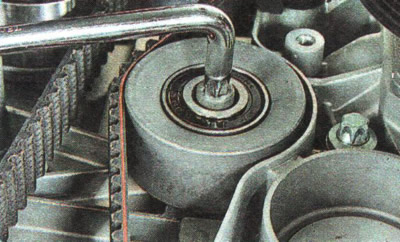
17. Loosen the intermediate roller mounting bolt, but do not completely unscrew it.
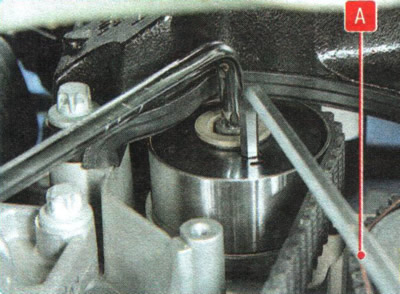
18. Loosen the tension of the timing belt, for which, with key A, turn the roller clockwise until it stops, overcoming the resistance of the roller spring...
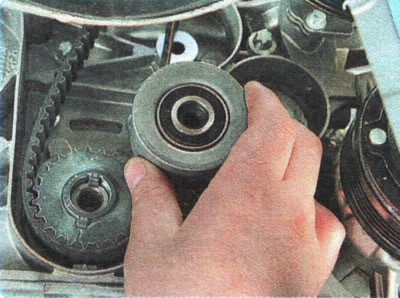
19.... and then, holding the tension roller in this position, unscrew the bolt securing the intermediate roller and remove it.
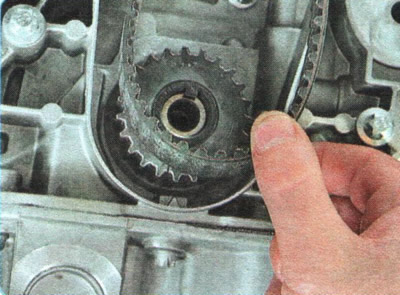
20. Remove the belt from the crankshaft pulley...
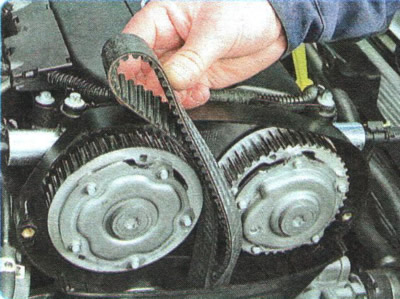
21.... and remove it from the engine.
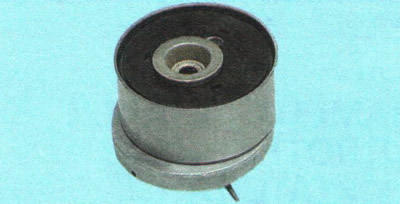
USEFUL ADVICE: Whenever you replace the timing belt, replace its tensioner...
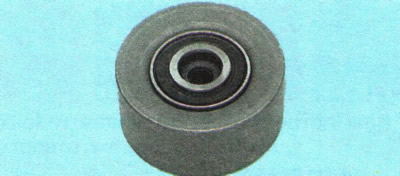
...and intermediate rollers, since their resource has already been reduced and when installing the old rollers after a relatively short period of time, it may be necessary to disassemble them again to replace them. In addition, there is a high risk of destruction of long-running rollers, which will lead to emergency engine failure. Removing the intermediate roller is described above in this subsection (see paragraphs. 17-19)...

... to remove the tension roller, unscrew the bolt of its fastening.
22. Install the rollers, if they were removed, in the reverse order of removal.
23. Check the alignment of the alignment marks of the crankshaft and camshafts (see «Setting the piston of the first cylinder to the TDC position of the compression stroke»).
24. Put on a belt on a gear pulley of a cranked shaft. Get the drive branch of the belt behind the intermediate roller and, pulling it, put it on the camshaft pulleys. Insert the rear branch of the belt behind the tension roller, after turning it clockwise until it stops (see point 18).
NOTE: After the action on the tension roller stops, it will take the position necessary for normal belt tension under the action of the spring.
25. Screw the pulley mounting bolt into the crankshaft shank and rotate the crankshaft two turns so that the tension roller provides the nominal belt tension.
26. Check the alignment of the alignment marks of the crankshaft and camshafts. If not, reinstall the belt.
27. Establish all earlier removed details in sequence, return to removal.
